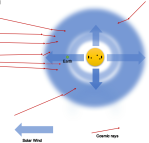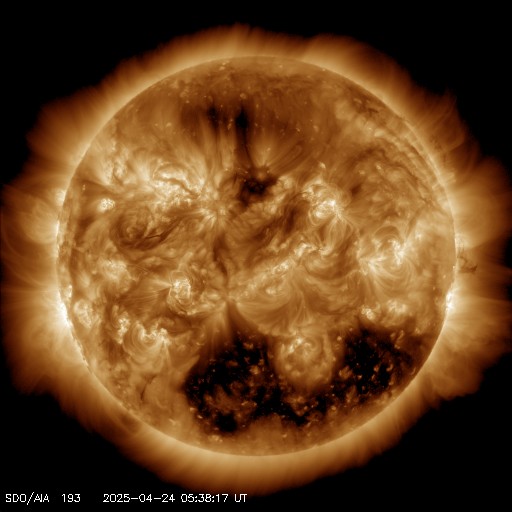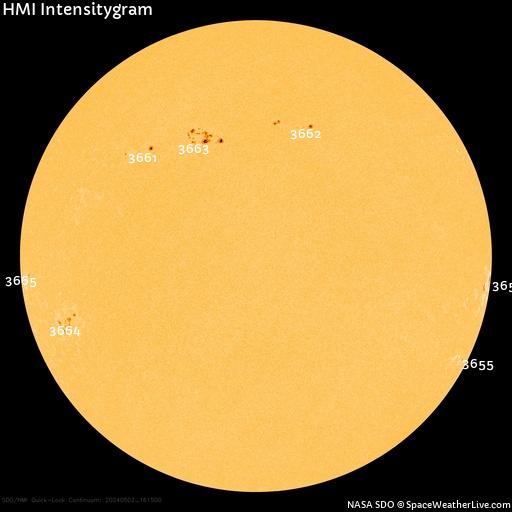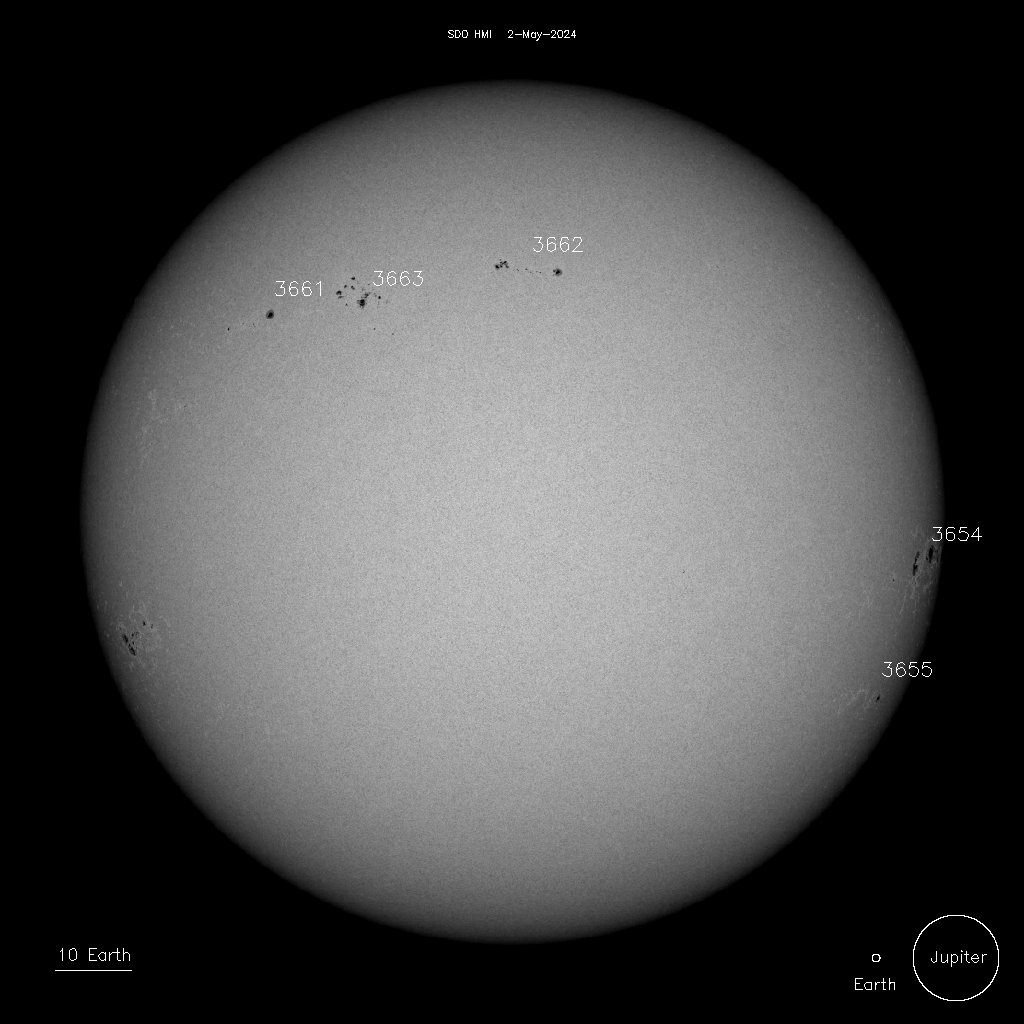In Chapters 3- 6 of Solar History, I presented the empirical proof that most wars and genocides of the past millennium took place during Grand Solar Maxima, while social progress, inventions and improvements in human rights developed in Grand Solar Minima, in the ‘Bad-Weather- Periods’. Chapters 7- 18 illustrate the historical events in the context of these cycles.
So far, this is good news concerning the long-term prospects for humanity.
Before we deal with the socio- political trends of the next Grand Solar Minimum, let’s have another look at the progression of the 11-years Schwabe cycles. In 2016, Motherboard.vice.com asked (in referring to Tchijevsky):
“Is the Solar Cycle Stoking ISIS?”[i]Well, the relatively high mass excitability of 2011 (Arab Spring, Libyan War) did indeed agree with (Schwabe) maximum. But this solar cycle (solar cycle 24) was very week and had peaked in 2014 and has since declined rapidly toward a premature trough in 2018.
When Tchijevsky died in 1964, he did not know how the pattern of the 11-year cycles would unfold in the later decades of the 20thcentury. Adam Michalec (1990, see also Chapter 2) detailed examples of human excitability from the 1700s onwards, and filled in dates of political and social events that converged with the peaks of the Schwabe cycles (see Fig. 7). The predicted 2012 peak of solar cycle 24 would have to be re-evaluated as it turned out to peak in 2014. So, it was rather between the beginning of the Arab Spring of 2011 and the beginning of the European Migration Crisis of Sept, 2015. The minimum of this cycle (cycle 24) is expected in 2020, which is also the end of the cycle, but the sun had already reached the said minimum levels in early 2018. And the next Schwabe maximum is expected in 2024-2025, this will bring another probability of increased social excitability, uprisings and violence, although it is projected to be an even weaker maximum.
The last 2 Schwabe Cycles

Fig. 32: Solar cycle 23/ 24 / Solat History Some historical events in relation to recent sunspot activity in the Schwabe cycles of the new millennium, from 2000 to 2018. Solar data: NASA/SWPC Boulder, COB USA
Obama was first elected in 2008, in an emotional historical land slide election.
Apathy and indifference in 2018- 2021
Some of the general descriptions of the first period, given by Tchijevsky for Schwabe cycles, show strong similarities to the social mood and lethargy of the populations (of the Western World) in 2018, the unexpected early low of solar cycle 24.
In the current social landscape (2018), political leaders find it hard to motivate the population for anything other than complaining about the “others”. The masses are easily manipulated to have a strong opinion particularly against expression of freedom, self-responsibility, against freedom of speech and so on. People can more easily be engaged when appeals are made to their empathy and altruism, rather than to reason and rationality. But overall, even for the followers of mainstream leftist ideologies, activities largely remain at the level of complaining and hoping that governments will do something against “hate-speech”, perceived intolerance, xenophobia and climate change. The vast majority of the political establishment and the media complex are adamant to denounce everyone slightly to the right of Lenin as a “Nazi”. One should think that those who believe that suddenly Nazis are springing up everywhere should protest against them constantly, but they are not. In Germany, the Merkel’s Christian Democrat Party (CDU) denounces the libertarian /conservative AfD as ‘far right’ and demands them to be investigated by the Federal Intelligence Service. Almost no one seems to remember that AfD has in 2018 the same programs and positions as Merkel’s CDU used to hold just 15 years ago. So, who thinks AfD is far-right and voted CDU 15 years ago, used to be far-right at that time, just before Merkel took over, when the party was conservative. In some German regions, AfD is already over 20%, as long as all other party leaders keep slandering AfD voters as ‘far- right’, it will encourage more to vote for AfD. The serious danger here is that at some point, AfD or similar fractions might turn to actual far-right positions instead of perceived ones (see below).
Probably 30% of the population of the US- and 80 % of Europeans are convinced that Trump is a far-right (potential) dictator. But most of them seem to have no motivation to become politically active. For now, the violence against conservatives and even non- partisan middle ground citizens usually comes from a minority of agitators, such as self-declared members of Antifa or Black Lives Matter, well organized groups with many radicals among them, supported and financed by left-wing elitist interests like George Soros [ii](600 violent assaults were made on Trump supporters in two years). Normal people who were considered politically in the middle only a few years ago, if they maintained their position, are now called far- right by the mainstream media and political establishment. Although tensions are rising on different internal fronts, political violence is relatively calm for the time being. Regarding Schwabe cycles, here is again how Tchijevsky characterized the
First Period (Period of the minimum of excitability in the Schwabe cycles):
“The characteristics of this period are:
-Lack of unity in human masses.
-Indifference of the masses to political and military questions.
-Peacefulness of the masses.
-Tolerance and forbearance of the masses.
-The results of these characteristics are:
-Lack of any desire to struggle for the right or idea, easy capitulation, desertion, etc.”
“In the extreme points of the cycle’s course [Schwabe minima], the tension of the all human military-political activity falls to the minimum, giving way to creative activity, and is accompanied by a general decrease of military or political enthusiasm, by peace and peaceful creative work in the sphere of state organizations, international relations, science and art, with a pronounced tendency toward absolutism in the governing powers and a disintegration of the masses. […] Historical facts illustrating this period, are peace treaties, capitulations, occupations, decrease of parlimentarianism, strength of autocracies, and the ruling of minorities.”[iii]
Peacefulness is of course overall positive, but in accordance with a lack of self-preservation and neglect for the rule of law, it will lead to more conflict and self-destruction in the long term. When have we heard politicians and opinion leaders talk about tolerance? Where have we seen political procedures being dominated by tolerance, acceptance and empathy as the highest or even only values recently?
Here seems to lie one of the greatest challenges in the transition phases of grand solar cycles, especially the abrupt beginning of grand minima.
Low aggression, general peacefulness and cooperation are prerequisite for democracy and the development of humane societies. This alone is one of the enigmas of human evolution. In nature, the rules of natural selection predict the best survival of groups and individuals with the highest aggression, who reserve cooperation and empathy for their group only. Humans appear to be the only species who have broken this cycle, allowing groups with the highest altruistic sociability to thrive and form civilizations and the rule of law.
But an overemphasis of these traits without a strong sense of self-preservation has usually led to the fall of such open and free societies. To preserve civilization requires a minimal level of defensive aggressiveness. No group without a strong in-group preference has survived to tell their story or left any traces.
The decline and fall of the Roman Empire
Hugh Trevor-Roper described the fall of Rome as having begun already around 200 A.D:
“All the great structures […] the aqueducts, the amphitheatres and the city walls – were raised before the beginning of the third century. After that, there was almost nothing. More and more historians began to discern “a fundamental structural change” at the time, “which the great emperors at the end of that century, and Constantine himself at the beginning of the next, did but stabilize.”[iv]
In 1920, Professor O. SEECK pointed out a ‘problem of the biological order’ in the late roman Empire: “The cruelty and suspiciousness of the emperors removed and killed all persons who, by their mental qualities, capacity, and energy, raised themselves above the average. Through an artificial, inverted selection independence and originality were stamped out and a servile people bred.” [v]In terms of intelligence (60-80% inheritability, see p.125); what is described here is de facto dysgenics. Overall population started to decline already from 100 A.D onwards. [vi]
The final deterioration was accompanied by low birth rates (especially among the upper classes – leading to more dysgenics), promiscuity, abortion, widespread infanticide [vii], replacement of Roman soldiers with non-Roman soldiers, non- Roman emperors from the provinces, Emperors obsessed with sexual deviancies, mass immigration: it all seems familiar in regards to current developments in the West. In 2016, former Chief Rabbi Lord Sacks warned:
“Europe is going to die because of this, because Europe can only maintain its population by unprecedented levels of immigration. […] The contemporary historian of ancient Greece and ancient Rome saw their civilizations begin their decline and fall, both the Greeks and the Romans attributed it to falling birth rates because nobody wanted the responsibilities of bringing up children.” [viii]
As of today, most of the current Infrastructure in Europe was built between the late 1800s and 1960, even the average residential home in Germany is 36 years old,[ix]we are living of what our grandparents built. As we saw above from Charles Murray, the number of significant inventions and inventors has been declining already since the 1850s.
The currently fast declining solar activity is overlapping not only with climate irregularities, extreme weather and peacefulness, but also with social inertia/ passivity of the masses. Globalist, collectivist politicians and media leaders are pushing for social division with such fervor, that if we were affected by the same degree of social excitability as in the solar peaks of the 1850s, 1917 or the 1940s, intercontinental civil war would surely have ensued. Lenin, Hitler and Stalin needed much less propaganda and finger pointing to trigger the angry mobs to war and genocide. But today, the population remains relatively indifferent. Also, it is the first time in American history, that almost the entire global elite, almost all politicians and media leaders are viciously opposed to the American president, or at least they very convincingly pretend to be. The same opinion leaders even partly defended George Bush’s lies about non-existent Weapons of Mass Destruction in Iraq.
But within all of this, there is also a growing minority of primarily young people who are becoming more motivated for peaceful political engagement and who are willing to defend free speech and human rights (individual rights) and work for free-market values and personal responsibility. These are what some call ‘the people of the future.’
Near Future
The Second Period[of the Schwabe cycle]: transition, growth of excitability.
In the next solar cycle (25), this phase will correspond roughly with the years 2021-2023. The general characteristics of this period of the Schwabe cycle were summarized by Tchijevsky as follows:
“Beginning of uniting of masses; new leaders appear, political, military, orators; new programs are worked out; increasing work and influence of the press; political and military questions arise and begin to predominate the masses.[x]
Likely increased excitability in the next Schwabe Maximum 2023-2026
The third Phase (Schwabe maximum; Period of (maximum excitability)
We must consider that between the two lows of 2020 and 2032, we are still facing the Schwabe- cycle maximum around 2025, even if it is a weak maximum. This bears a risk of civil wars and revolutions instigated by elitist, radical collectivist opinion shapers, plus it also bears the risk that a broad frustration over failed multiculturalism will flip into real racism and nationalist uprisings in disregard of the rule of law.
Here is what Tchijevsky wrote about the characteristics of this peak of the cycle. Remember he witnessed the high peaks of 1905 and 1917 and the coinciding tumults first hand; and in 1942, long after the publication of his paper, he became a victim of the same totalitarian system that had risen then.
This extended excerpt of his description of the Schwabe Maxima shows how the social mood and agitations of these Schwabe Maxima are very similar to those in the Grand Maxima as we saw throughout part II of this book.
“This is the principal period of every cycle, which gives solution to the greatest problems of humanity. This period inspires nations to the greatest insanities, as well as to the greatest achievements.”
“The most prominent events of the universal human history occur in this period: such as, the greatest revolutions and wars which bring new eras into man’s history, thus confirming the formula of Heraclites, “Polemos panton esti pater kai basileus” – “The war is the father and king of all. This period can be justly called the period of advent of the people and the expression of their voices. Historians sometimes are at a loss to explain why ideas which may be freely and unhesitatingly discussed at this period, were considered unmentionable only one to three years previously.”
“Thus, the foundation is being prepared for the solutions of the greatest problems and questions of universal historical character; the foundation from which arise systems of human societies. Here take place events of a scale scarcely possible in other periods of the historiometric cycle.”
“The study of historical events in the third period [Schwabe maximum] allows the author to state the following facts pertaining to this period: The uniting of masses; appearance of leaders, military, political and social, triumph of ideas upheld by the masses; the maximum of parliamentary practices; democratic and social reforms; limiting of autocracies; insurrections, rebellions, mutinies, revolutions, wars, campaigns, expeditions, emigrations, migrations, persecutions, etc. “[xi]
Let’s keep in mind: Tchijevsky counted the number of historical events in Schwabe cycles, no matter their outcome in terms of sociability or justice. In contrast, the Grand Solar Cycles of this book describe the nature of the results of the social mood, e.g. war deaths, persecution. In the former case, some outbursts of violence did aim at liberation from oppression.
The social mood by 2025?
Illegitimate power brokers lose control whenever the population is less easily manipulated and less easily provoked to engage in wars, purges and genocides against the “others.” Could this be a reason why international elites increasingly see prompted to stifle free speech in recent years?
Despite the general decline in solar activity and the consequent long-term chance for a new ‘age of reason’ in the coming decades, we are likely facing a few years of increased violence around the solar peak around 2025.
Here, the general peacefulness and passivity of solar minimum may give rise to increased vigor and determination of some populations.
The political establishment has, first and foremost in western Europe, performed an unprecedented left shift in recent years. Most European citizens are opposed to EU policies, but they keep electing the same politicians. [xii]If social excitability develops like it has in the past Schwabe Maxima, there is the grave danger at this time that angry masses realize what has been happening to their countries, and then call for actual far-right politics (not for moderate conservative parties like the German AfD), and mobilize against immigrants or other minorities, instead of holding accountable the politicians who deliberately caused the chaos in the first place. Or, remaining centrist/ conservative parties turn far- right indeed. This is when the peril arises of a situation where right-wing politicians adapt the left’s identity politics and use their own version of it against foreigners and other minorities. Plus, peoples who have not given in to excessive subservient agreeableness as western people have, may experience the same increase in aggression and determination.
Hope. A new Golden Age in the next Grand Solar Minimum?
Solar activity has been declining since 2000. At the beginning of 2018, two years before the expected low of the current solar cycle 24, we were already at the level of solar minimum in terms of Group Sunspot Numbers. All precursors are present to indicate the Modern Grand Maximum has ended for good. Zharkova et al (2017) predicted a very week solar cycle 24 and at least two additional even weaker cycles thereafter. [xiii]
In the long-term trend, whenever the final drop into the next Grand Solar Minimum will take place in the future (‘when’ not ‘if’), we or our descendants can expect a period of increased reason and reinstitution of the rule of law and of human rights (individual rights) for several decades or a century.
But before we lay back and sing ‘kumbaya’: This would most likely be after some inconvenient adaptation processes, not only due to climate downturn and food shortages. Elitist collectivists and power-hungry people are dependent on humans being ‘in the dark’ – or as Aye Rand called it – they depend on ‘Man’s basic vice: the act of unfocusing his mind, the suspension of his consciousness, which is not blindness, but the refusal to see.”
If ‘consciousness’ and awareness of our humanity will indeed be increased, these corrupt elements of the global elites will throw a tantrum, they will not give up power without a fight.
As a further downside of the next Grand Solar Minimum, of course, we are dealing with the negative geological effects of, climate variability, crop failure, tectonic instabilities, climate refugees from disasters, and dwindling resources, primarily food and energy.
Now, all of these contemplations are focused on solar activity as the main driver of energetic changes in our environment. For the connection of the geo-magnetic field and human behavior, I have no exact data to share as of yet. The new thing here is the dwindling geo-magnetic field (as discussed on page 242). In the Maunder Minimum, it was much stronger and was able to buffer some of the increased influx of space radiation and cosmic rays. It is not clear whether the combination of low solar activity and low geomagnetic field is going to have a different effect or will this intensify the ‘usual’ state of mind and sociability during Grand Minima?
We have seen that human violence overall is declining over the centuries.
And we saw that violence and mass hysteria is reduced during Grand Minimum. In combination, we are doing better successively in every Grand Minimum. If the Next Grand Minimum will give us the time window of these projected few decades to a hundred years or more of relative peace and reason, then we (or the surviving ancestors) should have in this period the best chance of finding ways to create a new society, based on rationality and understanding of human nature, in long-term harmony with our environment and each other. This will be the best time span to plan on how to prevent or at least mitigate the next uptick of mass hysteria and violence in the Grand Maximum to follow after that. If we and our descendants succeed, future generations might live in the most peaceful and sustainably prosperous societies of known history.

- Fig. 19: Solar activity in 14C compared to inequality in Spain (approximated by the land rent/ wages ratio) plotted against time 1326-1842. The vertical axis shows the estimated land rent/ wage ratio, as it increases, inequality goes up because land lords gain relative to workers. Data source. Alvarez-Nogal and Prados de la Escosura (2007, 2013) Graph recreated after: Milanovic, Branko; 2016: Global Inequality A New Approach for the Age of Globalization; Belknap Press. Solar data Muscheler et al 2007
[i]Motherboard.vice.com Daniel Oberhaus Feb 17 2016 https://motherboard.vice.com/en_us/article/pgkpmz/is-the-solar-cycle-stoking-isis-geomagnetic-storms-alexander-tchijevsky
[ii]Daily Caller; Look Who Funds The Group Behind The Call To Arms At Milo’s Berkeley Event
Chuck Ross; 02/03/2017; https://dailycaller.com/2017/02/03/look-who-funds-the-group-behind-the-call-to-arms-at-milos-berkeley-event/
[iii]Tchijevsky A. L. 1926: Physical Factors of the Historical Process, Translated by Vladimir P. de Smitt, Cycles, 1971: 22 pp.11-27. p. 16.
[iv]Trevor-Roper, Hugh, 1966: The Rise of Christian Europe (2nd. ed., London, 1966), p. 27)
[v]Seeck, O.1921: Geschichte des Untergangs der antiken Welt. 6 Bände. Metzler, Stuttgart 1895–1920 (mehrere Neuauflagen; Nachdruck der Ausgabe von 1921 chapter I, the extinction oft he best.
[vi]The English review: Emmet Scott (October 2012) The Role of Infanticide and Abortion in Pagan Rome’s Decline.
[vii]Harris, William V., 1994: Child Exposure in the Roman Empire; The Journal of Roman Studies, Vol. 84
[viii]The Telegraph: Falling birth rates could spell end of the West – Lord Sacks; John Bingham
6 JUNE 2016
[ix]So alt sind deutsche Häuser im Durchschnitt; Asscompact; 28. Februar 2019;
https://www.asscompact.de/nachrichten/so-alt-sind-deutsche-häuser-im-durchschnitt
[x]Tchijevsky A. L. 1926: Physical Factors of the Historical Process, Translated by Vladimir P. de Smitt, Cycles, 1971: 22 pp.11-27 p. 17
[xi]Tchijevsky 1971: Physical Factors, 1971 p. 16.
[xii]Pew Research Center; A majority of Europeans favor taking in refugees, but most disapprove of EU’s handling of the issue; Phillip Connor; September 19, 2018; http://www.pewresearch.org/fact-tank/2018/09/19/a-majority-of-europeans-favor-taking-in-refugees-but-most-disapprove-of-eus-handling-of-the-issue/
[xiii]Zharkova, V. V. 2017: Reinforcing the double dynamo model with solar-terrestrial activity in the past three millennia. University of Northumbria, Newcastle UK
Categories: Allgemein













![Kp-Index [0-3] Green - Stable/Calm Magnetosphere. [4] Yellow - Unstable Magnetosphere. [5+] Red - Geomagnetic Storm Conditions](https://firebasestorage.googleapis.com/v0/b/carrington-9.appspot.com/o/spaceWeatherNews%2FkpChart.png?alt=media)






